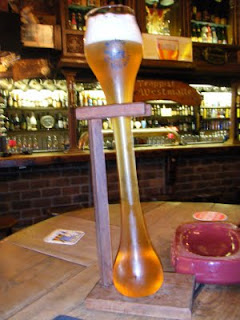 Yesterday's Golden Circle adventure had whetted R. and my appetite to see more of Iceland's magnificent natural wonders, so today we decided to go to the South Shore. The weather wasn't cooperating though - snow was falling fast outside and showed no signs of letting up.
Yesterday's Golden Circle adventure had whetted R. and my appetite to see more of Iceland's magnificent natural wonders, so today we decided to go to the South Shore. The weather wasn't cooperating though - snow was falling fast outside and showed no signs of letting up.A few minutes before the appointed pickup time, the tour operator called up the Fosshotel Lind reception and asked to talk to us. Uh oh, Houston - it seems like we have a problem. True enough, the South Shore tour was cancelled for the day, much to our dismay.
Luckily, Perla, who was on duty behind the reception desk, sensed our plight and swung into action. She suggested calling Reykjavik Excursions to inquire if their tour was pushing through or not. Within a matter of minutes, Perla had spoken to their representative and arranged the hotel pickup, just in the nick of time and thus saving the day. Takk!
While the day's adventure visited a number of memorable destinations including the waterfalls Skogafoss (short and stocky) and Seljalandsfoss (tall and skinny), as well as the black sand beach (abeit covered with snow) at the village Vik, easily the highlight was the visit to the protruding glacier tongue of Sólheimajökull. Typical of long Icelandic names, I was fearful of causing offense by mangling its name, so I declare this tongue-twister unpronounceable.
 Not sure if I contributed to the glacier receding, but it was impossible to resist lying on its surface and taking small pieces of the ice which according to the guide could be eaten, slight brownish coat of dirt notwithstanding. "Really?", I was incredulous but did it anyway. Other than that R. and I busied ourselves taking pics posing inside Sólhei-what's various crevices.
Not sure if I contributed to the glacier receding, but it was impossible to resist lying on its surface and taking small pieces of the ice which according to the guide could be eaten, slight brownish coat of dirt notwithstanding. "Really?", I was incredulous but did it anyway. Other than that R. and I busied ourselves taking pics posing inside Sólhei-what's various crevices.A group of active-looking types arrived at roughly the same time wearing proper clothing and carrying the right equipment for hiking atop Sólhei-what. I later discovered that this is quite a popular pastime, and an easy way to do so would be to join a tour led by outfitters such as Icelandic Mountain Guides, who offers all sorts of outdoor activities ranging from ice climbing to horseback riding. Their Sólhei-what glacier walk was recently featured in the Reykjavik Grapevine, the best source for everything happening in Iceland.
Oh well, I looked wistfully - maybe next time, on another longer visit to Iceland. Just don't ask me to pronounce Sólheimajökull.
Check out more Iceland posts here.












































